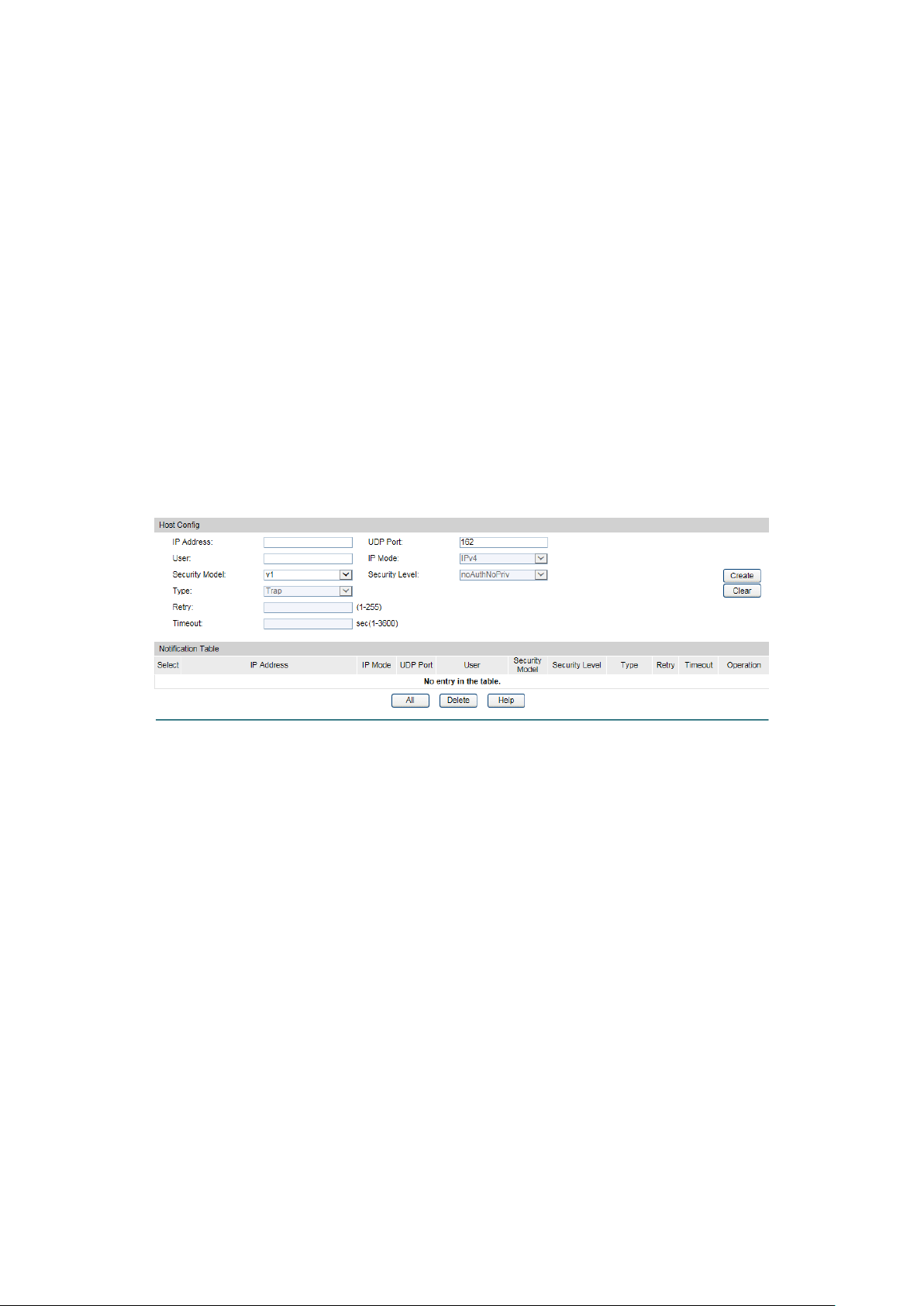Loading ...
Loading ...
Loading ...

13.2 Notification
With the Notification function enabled, the switch can initiatively report to the management
station about the important events that occur on the Views (e.g., the managed device is
rebooted), which allows the management station to monitor and process the events in time.
The notification information includes the following two types:
Trap:Trap is the information that the managed device initiatively sends to the Network
management station without request.
Inform:Inform packet is sent to inform the management station and ask for the reply. The
switch will resend the inform request if it doesn’t get the response from the management
station during the Timeout interval, and it will terminate resending the inform request if the
resending times reach the specified Retry times. The Inform type, employed on SNMPv2c and
SNMPv3, has a higher security than the Trap type.
On this page, you can configure the notification function of SNMP.
Choose the menu SNMP→Notification→Notification to load the following page.
Figure 13-8 Notification Config
The following entries are displayed on this screen:
Create Notification
IP Address:
Enter the IP Address of the management Host.
UDP Port:
Enter the number of the UDP port used to send notifications.
The UDP port functions with the IP address for the
notification sending. The default is 162.
User:
Enter the User name of the management station.
IP Mode:
Select the IP mode of the IP address.
Security Model:
Select the Security Model of the management station.
Security Level:
Select the Security Level for the SNMP v3 User.
• noAuthNoPriv:
No authentication and no privacy security
level are used.
• authNoPriv: Only the authenticat
ion security level is
used.
• authPriv:
Both the authentication and the privacy
security levels are used.
195
Loading ...
Loading ...
Loading ...